Though cart bases may not be your main concern when determining your custom cart’s design, it’s important to know your options. The material you choose for your base will affect your budget and lead time, so being aware can help you plan ahead for these expenses and time constraints. Here are some pros and cons to consider when choosing between different materials and manufacturing processes for your cart base.
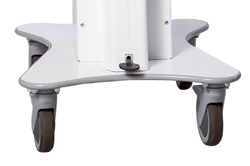 Sheet Metal Base
Sheet Metal Base
A sheet metal base involves punching or lasering out the metal shape, welding the components together, powder coating, and assembling rubber edging.
Pros |
|
Cons |
|
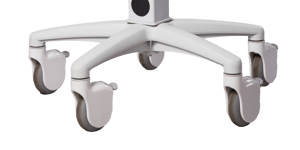 Plastic Injection Molding Base
Plastic Injection Molding Base
The plastic injection molding process utilizes plastic pellets which are melted and then injected into a mold. When cooled it forms the desired component shape.
Pros |
|
Cons |
|
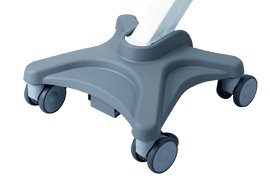 Aluminum Casting Base
Aluminum Casting Base
Multiple casting processes are used for developing custom medical cart bases. The options include sand casting, die casting, and V-process casting. Each of these processes has its own pros and cons and production volume requirements, which will be addressed during the design phase of your project.
Pros |
|
Cons |
|
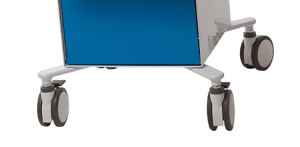 Machined Base
Machined Base
A machined base can be completely machined as one piece or each leg could be machined individually and attached to the cart during the assembly process.
Pros |
|
Cons |
|
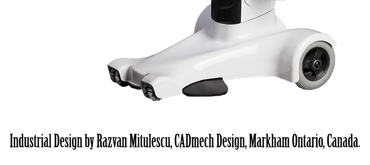 Combination Base with Plastic Thermoform Cover
Combination Base with Plastic Thermoform Cover
A combination base is designed by mixing different base materials. For example, the structural part of the base could be made out of metal, and an aesthetic plastic cover could be installed over the top. The plastic cover could be made with either the injection molding process or the thermoforming process. (The base pictured here has a structural sheet metal base, with an aesthetic thermoform base cover. The thermoform cover is made by heating a plastic sheet to a pliable forming temperature, forming it to a specific shape or mold, and trimming it down to create the final product.)
Pros |
|
Cons |
|
Customize Your Base
Keep in mind that since this is a custom design project, we can design a base and use manufacturing processes that fit your design budget, timeline, preferences, etc. The options you see here are suggestions to get you started, but you are not limited to these selections. By mixing and matching any of these processes we can help you come up with an ideal solution for your project.
HUI’s team of experts can help you determine the ideal base for your custom medical cart, depending on your budget and project requirements. Contact us today, and we’ll get your project underway.
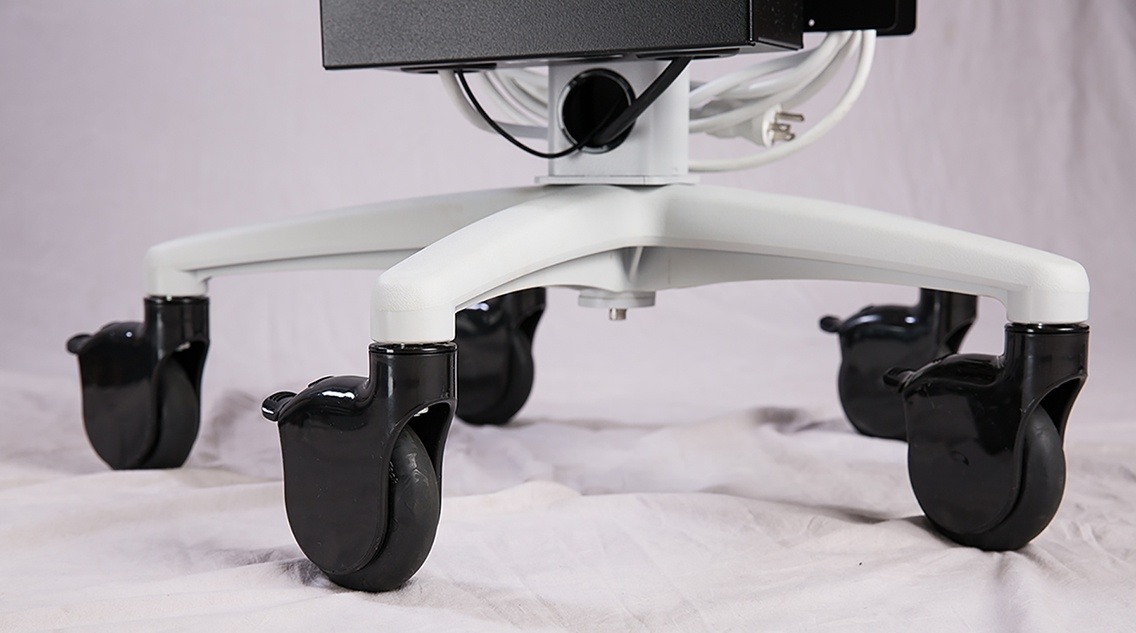
 Sheet Metal Base
Sheet Metal Base Plastic Injection Molding Base
Plastic Injection Molding Base Aluminum Casting Base
Aluminum Casting Base Machined Base
Machined Base 
